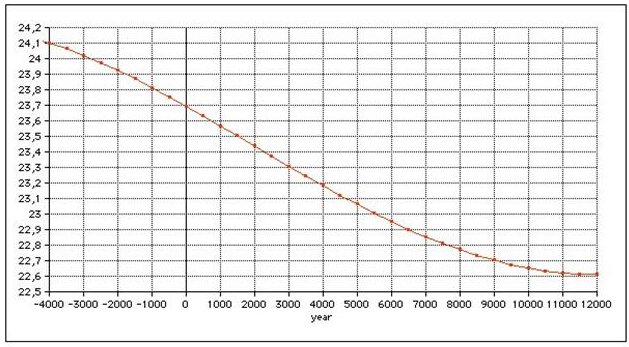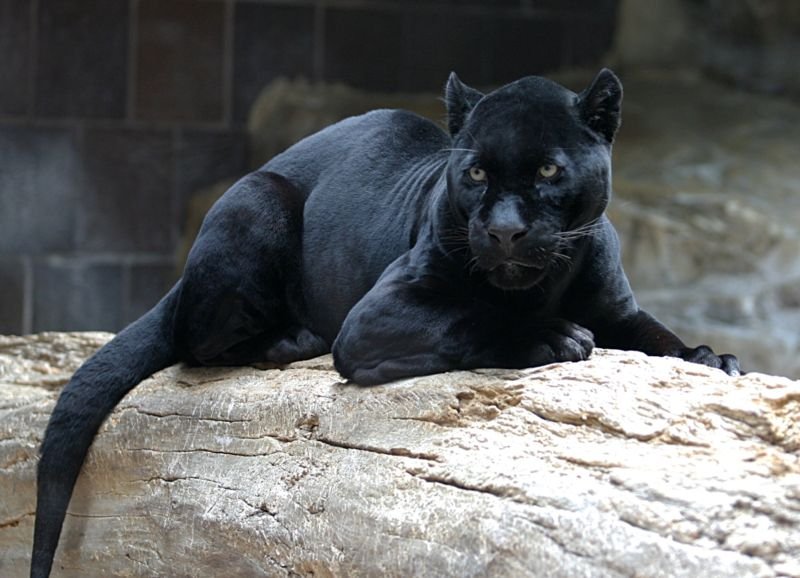2. The henua calendar could maybe begin with Sun at the tropic of Cancer, approximately 24º north of the equator:
And possibly the structure reflected in twice 236 glyphs was created 2,000 years ago when the obliquity was 23.6º:
24º could be an older measure dating from the time when the Egyptians were building their great pyramids (cfr at 16). The picture of kiore at left and henua at right could mean Sun (the 'black rat') is at the back side ('north of the equator') as viewed from Easter Island (henua):
There were no mammals excepting rats on Easter island, but a black rat could personify the great Sun lion north of the equator - when Leo ruled in the sky it was winter south of the equator, cfr at Moe: ...the jaguar invited the anteater to a juggling contest, using their eyes removed from the sockets: the anteater's eyes fell back into place, but the jaguar's remained hanging at the top of a tree, and so it became blind. At the request of the anteater, the macuco bird made the jaguar new eyes out of water, and these allowed it to see in the dark. Since that time the jaguar only goes out at night. Having lost fire, it eats meat raw ...
Rei in Ga2-27 (where 2-27 probably alludes to 22 / 7 = π) is, according to my interpretation, the first glyph in the first period of Sun, preceded by 4 * 29 = 116 dark nights. Manu kake (the climbing 'bird') could illustrate the beginning of the season when Rigi, the great worm, will raise the sky half-shell very high. It would explain the imbalance between the short beak at left and the longer at right - the sky roof is higher in front. There are 3 days (Ga2-27--29) - similar to the 3 islets outside the southwestern corner of the island - before the first day of the 3rd month. 61 = 60 + 1 should indicate the 'birth' of 'the land of Sun', and appropriately it is a day of Saturn - given that we count from Rei in the π position. Counted from where 'Old-Spider had Moon placed in the west', the distance is 59 + 61 = 120 nights. This fact made me try a rearrangement with 4 glyphs instead of 3 before the arrival of Sun:
120 (= 108 + 8 + 4) is half 240, which seems reasonable. However, these 4 glyphs must be used also in order to reach 240:
Maybe we should compromise: 108 + 8 + 2 = 118 = 120 - 2 = 4 * 29½. Venus as morning star should be where the reef breaks the waves, as a sign of the birth of the 'main land' ahead: ... Fakataka swims and swims, reaching another land. She goes there and stays on the upraised reef in the freshwater pools on the reef, and there delivers her child, a boy child. She gives him the name Taetagaloa. When the baby is born a golden plover flies over and alights upon the reef. (Kua fanau lā te pepe kae lele mai te tuli oi tū mai i te papa). And so the woman thus names various parts of the child beginning with the name 'the plover' (tuli): neck (tuliulu), elbow (tulilima), knee (tulivae) ... Basically the G text is a Moon calendar. Therefore we should count with lunar months, 29½ nights. There is no problem with the fraction because Moon has 2 faces and instead of counting in weeks we count in fortnights, instead of counting in months we count in double-months. For Sun to be incorporated in the G text this method (counting in pairs) is not possible, Sun 'has only 1 limb'. This limb can, though, be divided into 3 parts: turi-uru, turi-rima, turi-vae. Each such part can e.g. have 10 days, and then the solar month will be 30 days long. Or we can count a quarter as 3 * 30 = 90 days. This forces a beginning with 4 'Bacab' glyphs (from Rei in Ga2-27), the first 2 of which are 'borrowed' from Moon. 4 * 29½ = 118. |
|||||||||||||||||||||||||||||||||||||||||||||||||||||||||||||||||||||||||||||||||||||||||||||||||||||||||||||||||||||||||||||||||||||||||||||||||||||||||||||||||||||




